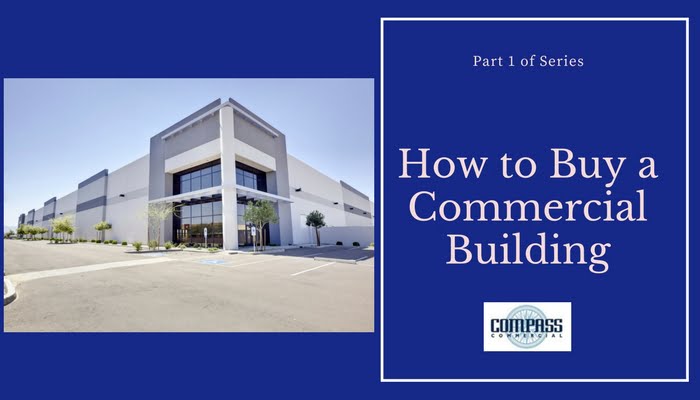How to Buy a Building
PART ONE
You’ve made the decision to purchase a building for your business. Now what?
Where do you start? How does it happen? What do you need to know before you sign on the dotted line?
This three-part blog series will help you understand.
An investment building is usually priced based on the cash flow it produces. Buying a vacant or near-vacant building is different – the price is usually based on average price per square foot, similar to the pricing on a home. The value of a commercial building involves a complicated process, which you can learn more about at The Appraisal Institute.
STEP 1: Develop the Criteria
- What type of building is needed?
- What is the optimal location?
- What size building is appropriate?
- Can you pay cash, or do you need a loan?
STEP 2: Understanding Mortgage Loans
Doctors and Dentists can get a zero-down loan. Most everyone else must get a commercial loan from a bank.
- If your business is going to occupy 51% or more of the space, you may qualify for a Small Business Administration(SBA) loan. Upside: This loan only requires 10% down payment. Downside: You as the business owner must personally guarantee repayment. Your personal assets may be used as collateral for repayment of the loan.
- Many firms will get a traditional commercial mortgage, similar to a residential mortgage loan but with different terms. Expect a down payment of 25-30% of the purchase price, or more, depending on your credit. The interest rate depends on the financing company. It is useful to get prices from several banks/credit union. The biggest difference with this type of loan is that while it may be amortized over 20 or 30 years, the actual loan from the bank is usually for 5 to 10 years. That means you have to keep applying for a new loan every few years. Historically, this wasn’t an issue, but the 2008-2012 collapse of the real estate market meant many buildings wouldn’t appraise as valued dropped.
- Occasionally you’ll find a building for sale on a land contract. This mean the owner finances the loan based upon an agreed down payment, number of years, interest rate, and amortization schedule. Land Contract loans are usually for 5 to 7 years, with any unpaid amount due at the end, in what is called a “balloon payment.” If you are buying on a landlord contract, it is critical that the owner owns the building free and clear. If they don’t, you’ll need to look at the terms of their mortgage to see if they can sell their rights to someone else. Most banks won’t allow this. Hire an attorney to help you through this transaction, even if you have an agent working for you.
Before you start looking at buildings, set an appointment with the branch manager of your bank. Ask them to review your firm’s financials and tell you how much of a mortgage you could afford. Some bank managers aren’t able to do this, but the bigger institutions have staff dedicated to getting mortgages approved. Don’t waste time looking at buildings if you aren’t qualified for a mortgage.
The chances are you will have to put money into whatever building you buy. Be clear about what improvements are needed, and the cost to make them. You can usually add costs for improvements into your loan.


